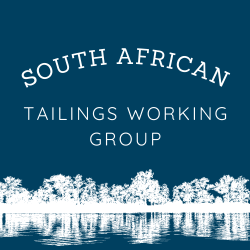Tailings dams in South Africa pose serious risks to communities and ecosystems
The Mine Tailings Working Group of South Africa, a partnership of civil society groups including the Bench Marks Foundation, Federation for Sustainable Environment (FSE). IANRA invites you to a hybrid seminar that will take place at the University of Johannesburg, Doornfontein campus. The seminar will meet in the Boardroom. Map here.
Those attending in person must carry with them valid Covid Vaccination Certificate as proof of having been vaccinated.
Those seeking to join online must register for the zoom link.
A full list of the presenters will be circulated soon.
The first part of the seminar and online session will focus on South African Tailings facilities - highlighting the legal situation and the impacts on mining affected communities.
The environmental, social and health effects of mine waste facilities, called tailings dams, are extreme and some speakers from affected communities will present their impacts as well.
Waste from gold mines constitutes the largest single source of waste and pollution in South Africa and there is wide acceptance that water pollution from mining operations is responsible for the most costly environmental and socio-economic impacts. At the Witwatersrand gold fields, more than 120 mines have extracted over 116,00 tons of gold and uranium, leaving a legacy of more than 270 tailings facilities that cover approximately 400 km2. Contamination, including air, water and soil pollution, have significant health impacts on surrounding communities, many of which are composed of low-income homes.
The working group finds that current laws and regulations in South Africa are not preventing or mitigating the detrimental impacts of tailings dams. These shortcomings include a lack of adequate regulations for mine closure and dust emissions, insufficient buffer zones between tailings facilities and communities, a lack of control and maintenance for abandoned tailings dams, and misclassification of the re-processing of residual gold and other metals from historic tailings facilities and residue stockpiles.
Mariette Liefferink from FSE notes that, “It is widely recognised that problems related to mining waste (tailings) may be rated as second only to global warming and stratospheric ozone depletion in terms of ecological risk. The release to the environment of mining waste can result in profound, generally irreversible destruction of ecosystems. Waste from gold mines constitutes the largest single source of waste and pollution in South Africa. Gold mining waste was estimated to account for 221 million tonnes or 47 % of all mineral waste produced in South Africa, making it the largest, single source of waste and pollution.”
“The South African government must introduce regulatory reforms that will ensure effective transparency and monitoring of tailings facilities,” says Hassen Lorgat from the Bench Marks Foundation and a convenor of the working group. “We have noticed a number of corporations starting to talk about tailings management but talk is cheap. Real reform begins with the government making real legislative reforms. But corporations do not have to wait for that and must include mining communities and independent experts as part of the oversight for individual tailings management”, he added.
South Africa is not alone in dealing with unsafe and abandoned tailings facilities; communities from Madagascar, to Brazil, to the United States face similar issues. Tailings dams are failing with increasing frequency and severity. Recent tailings dam failures across the world have led to over 300 deaths, hundreds of kilometres of contaminated rivers and ecosystems, and have resulted in billions in lost profits and remediation costs for mining companies. As climate change brings increasingly severe and extreme weather conditions, tailings dams are becoming more and more of a risk.
NEW and UPDATED REPORT
The event coincides with the publication of Safety First: Guidelines for Responsible Mine Tailing Management (available at www.earthworks.org/safety-first starting May 31st), an updated set of guidelines for improving the management of mine waste disposal facilities endorsed by an international group of scientists, communities, Indigenous Peoples and civil society groups.
“Dangerous tailings dams threaten thousands of communities across the globe. There must be civil society oversight for tailings dams, as well as rigorous, independent third party technical review,” said Jamie Kneen of MiningWatch Canada. “It is clear that much more stringent oversight of the mining industry is urgently needed.”
Speakers from these international organizations will speak on the webinar from their countries.
For more information on the event please contact: Simo@bench-marks.org.za
For additional comment please contact: Hassen Lorgat, convenor, +27823626180
